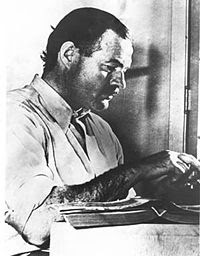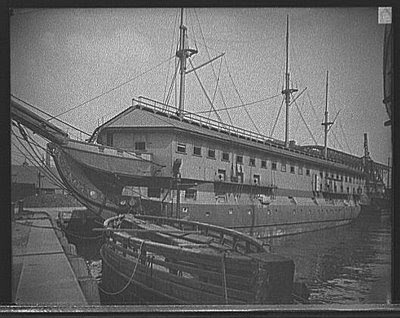

Top photo: Geronimo, legendary Apache warrior of the late 19th century; bottom photo: Geronimo's grave near Lawton, Oklahoma.)
---------------------------------------------
By Pat Browning
"Geronimo!"
That cry dates back to World War 2. To this day it remains the motto of the 501st Parachute Infantry Regiment. Their ceremonial chief is still “Chief Geronimo.” For the record, Geronimo was never a chief but he might as well have been. He was a legendary figure in his lifetime, and he’s still making news.
I never met Geronimo. I’m old, just not that old. But once upon a lifetime I knew a feisty little newspaper reporter who had shared a meal with him.
Her name was May Case. She was almost 90 when I met her, and still working for The Clovis (California) Independent, a newspaper she and her husband founded in 1918. In her small way, she was as legendary as Geronimo.
The 100th anniversary of Geronimo’s death on Feb. 17 generated newspaper and TV stories about the old warrior. As a prisoner at the Fort Sill military base near Lawton, Oklahoma, Geronimo had his own little cabin. He farmed, raised cattle, and even enlisted as a soldier in Troop L, 7th U.S. Cavalry. This was the same regiment that was almost demolished at The Little Big Horn in 1876. Fortunately for tales of the wild, wild west, Geronimo was on the San Carlos reservation in Arizona Territory at the time.
Time and again between 1876 and 1886, Geronimo and his Apache followers left San Carlos, raiding ranches and wagon trains from mountain hideouts. At one point 5,000 U.S. troops (a quarter of all American military forces) were hunting Geronimo and his small band. Late in 1886 Geronimo and Chief Naiche, son of Cochise, surrendered. By 1894 they were settled at Fort Sill.
It’s been said that Geronimo was part P.T. Barnum. During his time at Fort Sill, Geronimo charged for his autograph and sold the buttons on his coats. He made a public appearance at the St. Louis World’s Fair (1904), appeared in President Theodore Roosevelt’s inaugural parade (1905) and met with Roosevelt to plead for returning his people to their native Arizona Territory.
I never met Geronimo. I’m old, just not that old. But once upon a lifetime I knew a feisty little newspaper reporter who had shared a meal with him.
Her name was May Case. She was almost 90 when I met her, and still working for The Clovis (California) Independent, a newspaper she and her husband founded in 1918. In her small way, she was as legendary as Geronimo.
The 100th anniversary of Geronimo’s death on Feb. 17 generated newspaper and TV stories about the old warrior. As a prisoner at the Fort Sill military base near Lawton, Oklahoma, Geronimo had his own little cabin. He farmed, raised cattle, and even enlisted as a soldier in Troop L, 7th U.S. Cavalry. This was the same regiment that was almost demolished at The Little Big Horn in 1876. Fortunately for tales of the wild, wild west, Geronimo was on the San Carlos reservation in Arizona Territory at the time.
Time and again between 1876 and 1886, Geronimo and his Apache followers left San Carlos, raiding ranches and wagon trains from mountain hideouts. At one point 5,000 U.S. troops (a quarter of all American military forces) were hunting Geronimo and his small band. Late in 1886 Geronimo and Chief Naiche, son of Cochise, surrendered. By 1894 they were settled at Fort Sill.
It’s been said that Geronimo was part P.T. Barnum. During his time at Fort Sill, Geronimo charged for his autograph and sold the buttons on his coats. He made a public appearance at the St. Louis World’s Fair (1904), appeared in President Theodore Roosevelt’s inaugural parade (1905) and met with Roosevelt to plead for returning his people to their native Arizona Territory.
Roosevelt denied the request, but Geronimo was getting too old just to head for the hills, as he had done so often. He died in 1909. It was not a spectacular ending to a spectacular life. He was drunk and fell off his horse, spent the night lying in a puddle of water, and developed pneumonia.
He’s as controversial in death as in life. His grave at Fort Sill is a popular tourist attraction, but all of Geronimo may or may not be buried there. Geronimo’s great-grandson Harlyn Geronimo and other descendants filed a federal lawsuit last Tuesday against the secretive Skull and Bones society, Yale University and the U.S. government in a quest to return their ancestor’s remains to his purported birthplace in New Mexico's Gila Wilderness.
He’s as controversial in death as in life. His grave at Fort Sill is a popular tourist attraction, but all of Geronimo may or may not be buried there. Geronimo’s great-grandson Harlyn Geronimo and other descendants filed a federal lawsuit last Tuesday against the secretive Skull and Bones society, Yale University and the U.S. government in a quest to return their ancestor’s remains to his purported birthplace in New Mexico's Gila Wilderness.
There’s an old, old rumor that members of the Yale secret society, Skull and Bones, stole Geronimo’s skull from his grave at Fort Still. One of the culprits was said to be Prescott Bush, father of the 41st President of the United States, George H.W. Bush, and grandfather of George W. Bush.
The lawsuit is not Harlyn G.’s only problem at the moment. The chairman of the Fort Sill Apache Tribe of Oklahoma reportedly said moving the remains would be desecration of a grave. Somewhere, Geronimo must be smiling at all the publicity generated 100 years after his ignominious death.
I hadn’t thought about May Case in a long time. My one newspaper clipping about her probably disappeared into a California dumpster. I typed her name into the search box at Dogpile and up popped an article from the Independent’s 2008 retrospective on its 103 years as the Clovis newspaper. The article describes May this way:
“She had a love for adventure and a natural curiosity. She had dined with Apache Chief Geronimo, was the confidant of outlaws, peace officers and gamblers, and fought her way into the work against her husband's great objections. But her determination and addiction to local news kept Case working for The Independent until three months prior to her death in 1967. She was 93 years old, the oldest working newspaper reporter in the nation.To this day, many still remember May Case walking about town with her straw press hat on and notepad in hand asking people about the news.”
That’s just how I remember May – wearing that straw boater-style hat with a press card stuck in the band. And I remember the twinkle in her eyes.
I also remember the night we hitched a ride with a couple of other reporters to a Los Angeles meeting of California Press Women. May liked to read palms, so while we killed time in the back seat, she read my palm. She studied my lifeline and love line, and predicted my future. Time has proved she was right on the money.
--------------------------------------------
(Note: Most of the information about Geronimo came from a front-page feature in the Oklahoman [which cited numerous sources], bolstered by Internet research. Photos are from Wikipedia.)


















